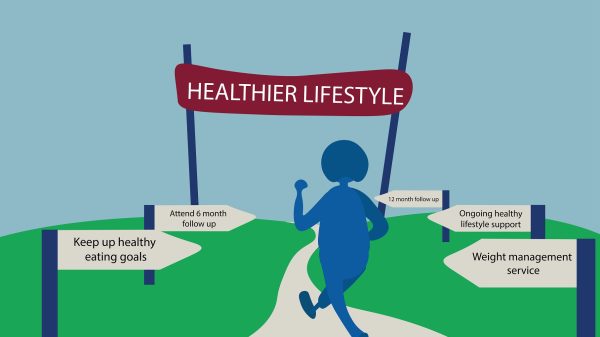A balanced diet is a way of eating that allows you to consume all the nutrients your body needs from a wide range of foods. Eating a balanced diet is important for your health: the tissues and organs of your body require adequate nutrition to work and function effectively. Without a proper diet, you may have an increased risk of a variety of chronic health problems such as diabetes or high blood pressure. As our lives become increasingly busy, eating a healthy and balanced diet can be difficult.
Write a meal plan. · Writing a weekly meal plan can help make sure you eat a well-balanced diet. · Plan the meals and snacks you will eat throughout the day so that you consume each food group every day. · Take one or two hours of your free time and write down your ideas for all meals and snacks.· Try doing the calculation of all the food groups for each daily feeding plan. Did you include dairy products every day? And enough fruits and vegetables?· If you’re busy or on the go, plan meals that are quick, require little cooking or recipes that you can freeze to get easy-to-prepare meals.· Search online for food plan samples to get inspiration.
Providing your kitchen with healthy foods from each food group will help make it easy to prepare balanced meals and eat a balanced diet. After writing your food plan, make time to go to the supermarket to stock up on a variety of your favorite healthy products. A well-stocked cupboard can be a great tool for maintaining a balanced diet. Stock up on products that do not need refrigeration for quick and easy balanced meals: canned beans, canned vegetables without salt, tuna or canned chicken, 100% whole products (such as quinoa, 100% whole wheat pasta or brown rice) and the nut butters.Stock up on frozen products such as vegetables (no sauces or condiments), fruits, precooked grains (such as brown rice or quinoa), low calorie dinners (for busy nights) and protein (chicken or fish).Keep a supply of fresh fruits, vegetables, dairy products (such as low-fat milk, yogurt, and cheese) and lean proteins (chicken, fish, pork, or lean beef).
Start a food diary. Keeping a food diary can help you eat a balanced diet in two ways. First, it can help you review your current diet and allow you to see in which areas your diet is deficient. And secondly, it’s a great method to keep you on track in the long run. Buy a newspaper or download an application to keep a diary on your Smartphone. Monitor as many days as you can. Pay attention to the 5 food groups. Do you consume every day?Often we are not aware of whether we eat too much or too little of something. A food diary can bring this information to light. When you first start, take note of where you think you can improve or make better decisions (for example, if you are not a fan of vegetables and usually skimp on this group or if you eat many of the same foods every week without much variety).

Eat foods from the 5 food groups. One of the pillars of eating a balanced diet is to consume food from each of the 5 food groups: proteins, vegetables, fruits, dairy products and grains. Each food group offers different vital nutrients that your body needs. Aim to consume something from each group every day.Proteins are essential for all the cells and processes in your body; anything from building and repairing tissues to producing enzymes, hormones and other chemicals. Ideally, choose foods with lean proteins, such as poultry, lean beef, seafood, nuts and beans.Dairy products also contain proteins but are known to be rich in calcium, potassium and vitamin D. Choose low-fat dairy products, such as yogurt, milk, cheese or kefir. It can be beneficial to buy a food scale to know exactly how many grams of meat you consume. You can also learn little tricks by searching online. For example, 85 g (3 ounces) of meat is about the size of a deck of cards. Fruits and vegetables are two food groups that offer a large amount of nutrients, such as vitamins, minerals, fiber and antioxidants. They are also low in calories, which makes them an essential component of a balanced diet. Choose a variety of fruits and vegetables every day. The group of grains can be divided into two separate groups: whole products (such as brown rice, quinoa or oats) and refined or processed grains (such as white bread, white rice or common pasta). Point out that at least half of the grain products you choose are 100% whole. These types of grains are rich in fiber, protein and other essential nutrients. It can be difficult for all 5 food groups to be present at each meal. Aim to consume foods of each group throughout the day. It is not necessary to consume the 5 groups at each meal.








































































You must be logged in to post a comment Login